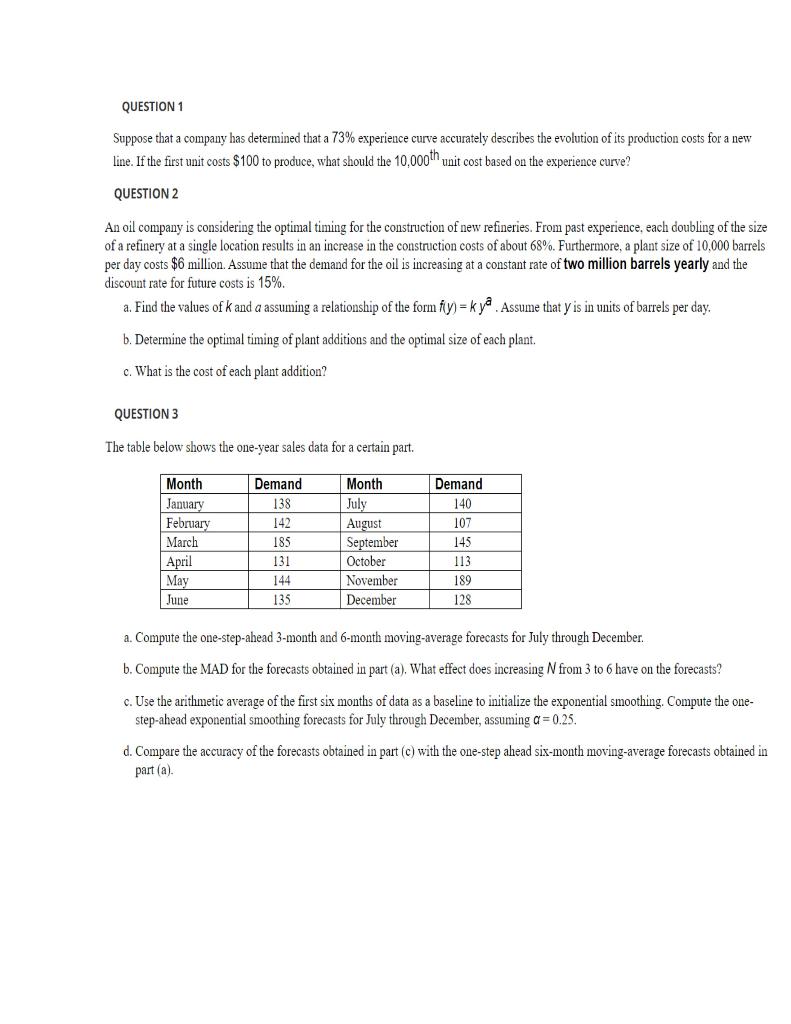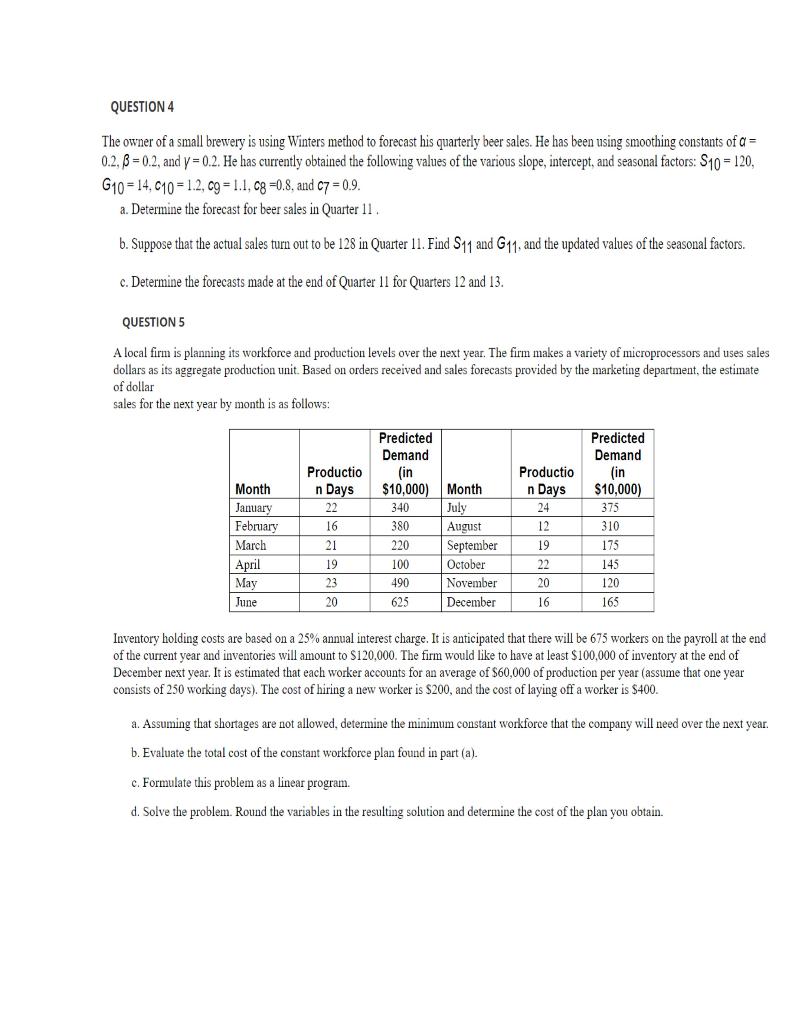

QUESTION 1 Suppose that a company has determined that a 73% experience curve accurately describes the evolution of its production costs for a new line. If the first unit costs $100 to produce, what should the 10,000th unit cost based on the experience curve? QUESTION 2 An oil company is considering the optimal timing for the construction of new refineries. From past experience, each doubling of the size of a refinery at a single location results in an increase in the construction costs of about 68%. Furthermore, a plant size of 10,000 barrels per day costs $6 million. Assume that the demand for the oil is increasing at a constant rate of two million barrels yearly and the discount rate for future costs is 15%. a. Find the values of k and a assuming a relationship of the form f(y)=kya. Assume that y is in units of barrels per day. b. Determine the optimal timing of plant additions and the optimal size of each plant. c. What is the cost of each plant addition? QUESTION 3 The table below shows the one-year sales data for a certain part. a. Compute the one-step-ahead 3 -month and 6-month moving-average forecasts for July through December. b. Compute the MAD for the forecasts obtained in part (a). What effect does increasing N from 3 to 6 have on the forecasts? c. Use the arithmetic average of the first six months of data as a baseline to initialize the exponential smoothing. Compute the onestep-ahead exponential smoothing forecasts for July through December, assuming =0.25. d. Compare the accuracy of the forecasts obtained in part (c) with the one-step ahead six-month moving-average forecasts obtained in part (a). QUESTION 4 The owner of a small brewery is using Winters method to forecast his quarterly beer sales. He has been using smoothing constants of a= 0.2,=0.2, and =0.2. He has currently obtained the following values of the various slope, intercept, and seasonal factors: S10=120, G10=14,C10=1.2,Cg=1.1,Cl8=0.8, and c7=0.9. a. Determine the forecast for beer sales in Quarter 11 . b. Suppose that the actual sales turn out to be 128 in Quarter 11 . Find S11 and G11, and the updated values of the seasonal factors. c. Determine the forecasts made at the end of Quarter 11 for Quarters 12 and 13. QUESTION 5 A local firm is planning its workforee and production levels over the next year. The firm makes a variety of microprocessors and uses sales dollars as its aggregate production unit. Based on orders received and sales forecasts provided by the marketing department, the estimate of dollar sales for the next year by month is as follows: Inventory holding costs are based on a 25% annual interest charge. It is anticipated that there will be 675 workers on the payroll at the end of the current year and inventories will amount to $120,000. The firm would like to have at least $100,000 of inventory at the end of December next year. It is estimated that each worker accounts for an average of $60,000 of production per year (assume that one year consists of 250 working days). The cost of hiring a new worker is $200, and the cost of laying off a worker is $400. a. Assuming that shortages are not allowed, determine the minimum constant workforce that the company will need over the next year. b. Evaluate the total cost of the constant workforce plan found in part (a). c. Formulate this problem as a linear program. d. Solve the problem. Round the variables in the resulting solution and determine the cost of the plan you obtain








